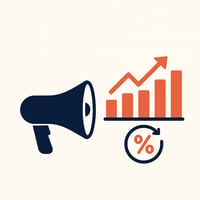The 2024 performance marketing landscape is no longer about channels—it’s about outcomes.
How Full-Funnel DSPs Are Changing the Game
For years, digital advertising lived in silos. Brand marketers ran awareness campaigns with reach and recall metrics. Performance teams chased installs, signups, or purchases. And the tools they used reflected this divide—some platforms optimized for impressions and views, others for clicks and conversions.
But in 2025, the game has changed.
Full-funnel DSPs are breaking down the walls between brand and performance. Instead of forcing marketers to choose between awareness and acquisition, modern platforms enable seamless orchestration across the entire customer journey.
Here’s how that’s reshaping the landscape:
1. One Platform, All Objectives
Legacy DSPs often specialized in either awareness (CTV, display, native) or lower-funnel performance (retargeting, app install, direct response). Today’s full-funnel platforms support multi-objective campaigns that adapt to the user’s journey—from first impression to final purchase.
Marketers can:
-
Run connected TV for brand lift, then retarget on mobile and web.
-
Blend video and interactive formats into a single conversion-optimized campaign.
-
Track post-view and post-click performance across channels.
2. Smarter Budget Allocation with Cross-Funnel Data
Most advertisers waste money by over-investing in what’s easy to measure. Full-funnel DSPs solve this with shared data and AI-based allocation across funnel stages.
-
Top-of-funnel campaigns feed retargeting pools.
-
Mid-funnel engagement (e.g., video completion, time on site) informs lookalikes and exclusions.
-
Algorithms adjust spend dynamically based on funnel drop-off and LTV projections.
It’s no longer about which campaign performs—it’s about how they work together.
3. Unified Reporting That Tells the Whole Story
With fragmented stacks, marketers juggle siloed dashboards and partial attribution. Full-funnel DSPs bring a single view of the customer journey, connecting brand metrics (reach, frequency, VCR) with business outcomes (CPA, ROAS, retention).
Expect to see:
-
Cross-device path visualizations.
-
Brand-to-conversion lift reports.
-
Creative-level insights that show how awareness creatives contribute to lower-funnel wins.
This transparency helps brands justify top-of-funnel spend while optimizing for performance.
4. Creative Strategy That Matches the Funnel
Performance creatives and brand creatives used to live on different planets. Not anymore.
Today’s full-funnel DSPs allow:
-
Dynamic creative optimization (DCO) tailored to each funnel stage.
-
Format flexibility across display, native, video, audio, CTV, and in-app.
-
A/B testing of messaging that evolves as the user progresses through the journey.
This enables narrative advertising—not just a one-shot CTA, but a conversation that unfolds over time.
5. Attribution That Reflects Reality
Traditional attribution undervalued awareness and over-credited last-click actions. Full-funnel platforms support incrementality testing, modeled attribution, and data-driven path analysis—giving credit where it’s due.
This shift empowers marketers to:
-
Properly value CTV, video, and rich media.
-
Understand the synergy between upper and lower funnel.
-
Make investment decisions based on true business impact, not just clicks.
Final Thoughts
The era of fragmented advertising is over. As customer journeys grow more complex and user privacy reshapes targeting, the need for unified, intelligent platforms has become urgent.
Full-funnel DSPs are the new standard—not just because they can do more, but because they do it in a way that aligns with how people actually engage with brands.
If you’re still separating branding and performance into disconnected silos, you're already behind.


